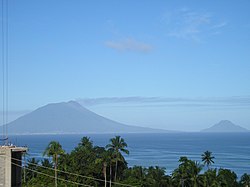| 102nd Regiment of Foot (Royal Madras Fusiliers) | |
|---|---|
| Active | 1742–1881 |
| Country | |
| Branch | |
| Type | Line Infantry |
| Role | Light Infantry |
| Size | One battalion (two battalions 1774–1799 and 1824–1830) |
| Garrison/HQ | Naas Barracks, County Kildare |
| Colors | Blue Facings, |
| March | Quick:Slow: |
| Engagements | Second Carnatic War Seven Years' War Third Carnatic War Third Anglo-Mysore War Third Anglo-Maratha War First Anglo-Burmese War Second Anglo-Burmese War Indian Rebellion |
The 102nd Regiment of Foot (Royal Madras Fusiliers) was a regiment of the British Army raised by the Honourable East India Company in 1742. It transferred to the command of the British Army in 1862. Under the Childers Reforms it amalgamated with the 103rd Regiment of Foot in 1881 to form the Royal Dublin Fusiliers.


